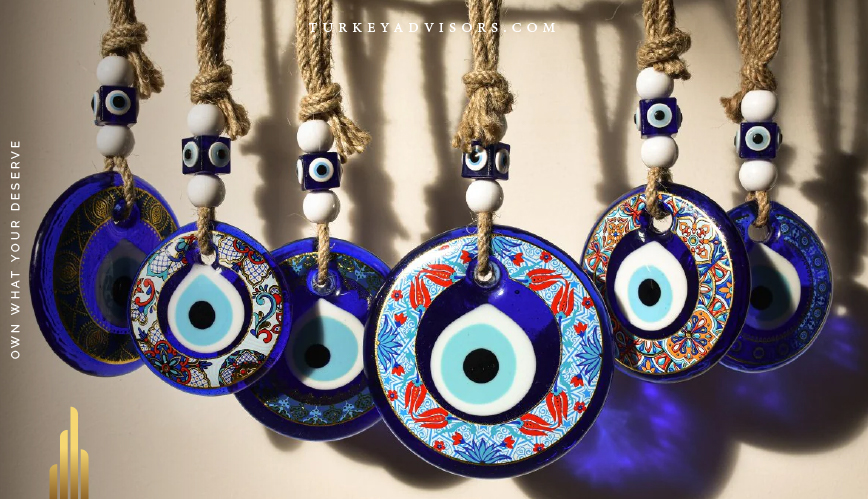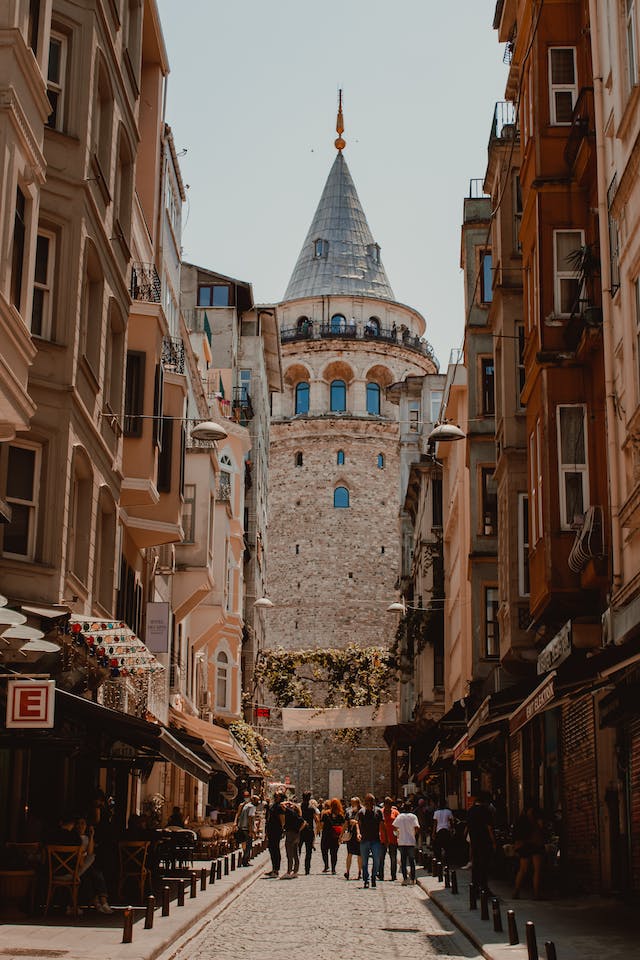Your guide on Turkish societal values - The evil eye in Turkey
Your guide on Turkish societal values - The evil eye in Turkey

Welcome to Turkey Advisors series ( the evil eye in turkey ). In this series we will share with you a glimpse on one Turkish societal values.
Read our previous articles about, Your guide on Turkish societal values - Turkish Bath and Your Guide on Turkish Societal Values - The Month of Ramadan
First of all If you are interested to move to Turkey, Interact with turkish people, and experience turkish culture, live in one of the turkish people then investing in real estate is the wisest action anyone can take.
Moreover, Click here to check our projects page in order to find a rich list of residential real estate investment turkey. Check apartment sale, penthouses for sale, and beachfront property.
The evil eye in turkey or the blue evil eye is known as the Nazar Boncuk in Turkey.
You'll undoubtedly see these eye-shaped, blue pendants hanging everywhere and being offered in every gift store in both the anatolian side and european side as soon as you arrive in Turkey. You will the evil eye in turkey offered in every gift store in every mall such as istanbul shopping mall, biggest mall in istanbul, grand bazaar, near blue mosque and in every istanbul shopping outlets in both anatolian side and european side.
The "Nazar Boncuk" is a hand-made item made of glass paste. The Arabic word "Nazar" means "look," and the Turkish word "Boncuk" means "pearl," making this phrase literally "pearl of the gaze." It is incorrectly referred to as "the evil eye" in English, which makes it fearful when it should not.
There are Nazar Boncuks or the evil eye in turkey, an ancient talisman, all across the Middle East. Armenia, Iran, and Greece also have it, but Turkey is where the evil eye in turkey is most common. The Nazar Boncuk or the evil eye in turkey can be found hanging on doors, at workplaces, on pendants, on taxi or bus mirrors, buried in building walls, or on the metro. It's also a very well-liked gift, given to bring luck. And before you know it, this custom will "contaminate" you as well.
What does it represent?
The Nazar Boncuk or the evil eye in turkey represents the jealous and envious gaze of others, which, in accordance with widespread belief, has the ability to bring about a variety of catastrophes to an individual or his property. According to Turkish culture, this amulet the evil eye in turkey shields its wearer from negative energy by absorbing them.
What is the origin of this superstition of the evil eye in turkey?
Judeo-Christian culture is likewise rife with the belief in the evil eye, and both the Old Bible and the Koran include references to it.
“From within, from the heart of men, come evil thoughts, fornications, robberies, murders, adulteries, greed, wickedness, deceit, immorality, evil eye, insults, pride, folly” (Mark 7:21, 22).
Amulets have been used by almost all civilizations, from India to Europe, to represent this superstition.
This sign the evil eye in turkey, however, could be far older. The eye of Horus was painted on tombs and mummies in ancient Egypt to wish the spirits of the deceased luck as they traveled to the afterlife. The Egyptians were so preoccupied with this eye that they used Kohl eye makeup to keep bad spirits from taking over their bodies. To shield their vessels from Poseidon's wrath, the ancient Greeks also painted it on the bow of their ships.
The Turks were shamanist nomadic people that crossed Central Asia on their way to what is now known as Anatolia. This may be the reason why the Nazar Boncuk or the evil eye in turkey is a synthesis of the ancient customs of the nations the Turks traversed to symbolize the amulet guarding them against the evil eye. The blue hue was likely influenced by the Byzantines, who revered blue, the color of the sky and water. It conjured up images of infinity, the divine, and the spiritual as well as tranquility, composure, and voluptuousness. Yet another factor that set the Sebastocrates, or Byzantine Emperor, apart from ordinary people was his color. Also, it is covered in Ottoman customs (Iznik ceramics, Blue Mosque, etc.).
Blue is still seen to bring luck in the Aegean area even now, which is why Greek islands' homes' entrances and churches' roofs are blue.
The Khamsa, which is a popular amulet in North Africa and the Middle East, is another one that is frequently linked to it. It resembles an open hand with five fingers and a central eye. The Punic religion and antiquity are the origins of this venerable sign, which was connected to the goddess Tanit. It may be known to you as Fatima's hand. Muslims honor Fatima-Zahra, the prophet Mohammed's daughter, with the use of this emblem. The five fingers of the hand held outward stand in for the five pillars of Islam.
Similar to the Nazar Boncuk or the evil eye in turkey, but not a religious sign, this hand is said to ward against misfortune for people who wear it. It is also used by other ethnic groups in the area; Jews refer to it as Myriam's hand and Levantines as Mary's hand.
When anything goes bad for someone, people say in Turkish, "Nazar dedi," that the "Nazar" touched him.
A Nazar Boncuk or the evil eye in turkey that cracks or fractures has served its purpose and has absorbed a poor eye; thus, it has to be replaced right away.
It is stated that in order for Nazar Boncuk or the evil eye in turkey to be successful, it must be purchased by someone who has only good intentions. Merchants will sneak this gift—which Turkish grandmothers frequently give to their grandchildren—into your purse or pocket, and it's a lovely souvenir to carry home from Turkey.
If you are interested in buy an apartment in Istanbul or buy a property in turkey feel free to contact our agents to help you find the best choice for you and your family. Click here to find answers to all your questions regarding this point.


 Istanbul
Istanbul
 Installment
Installment
 Selling
Selling





